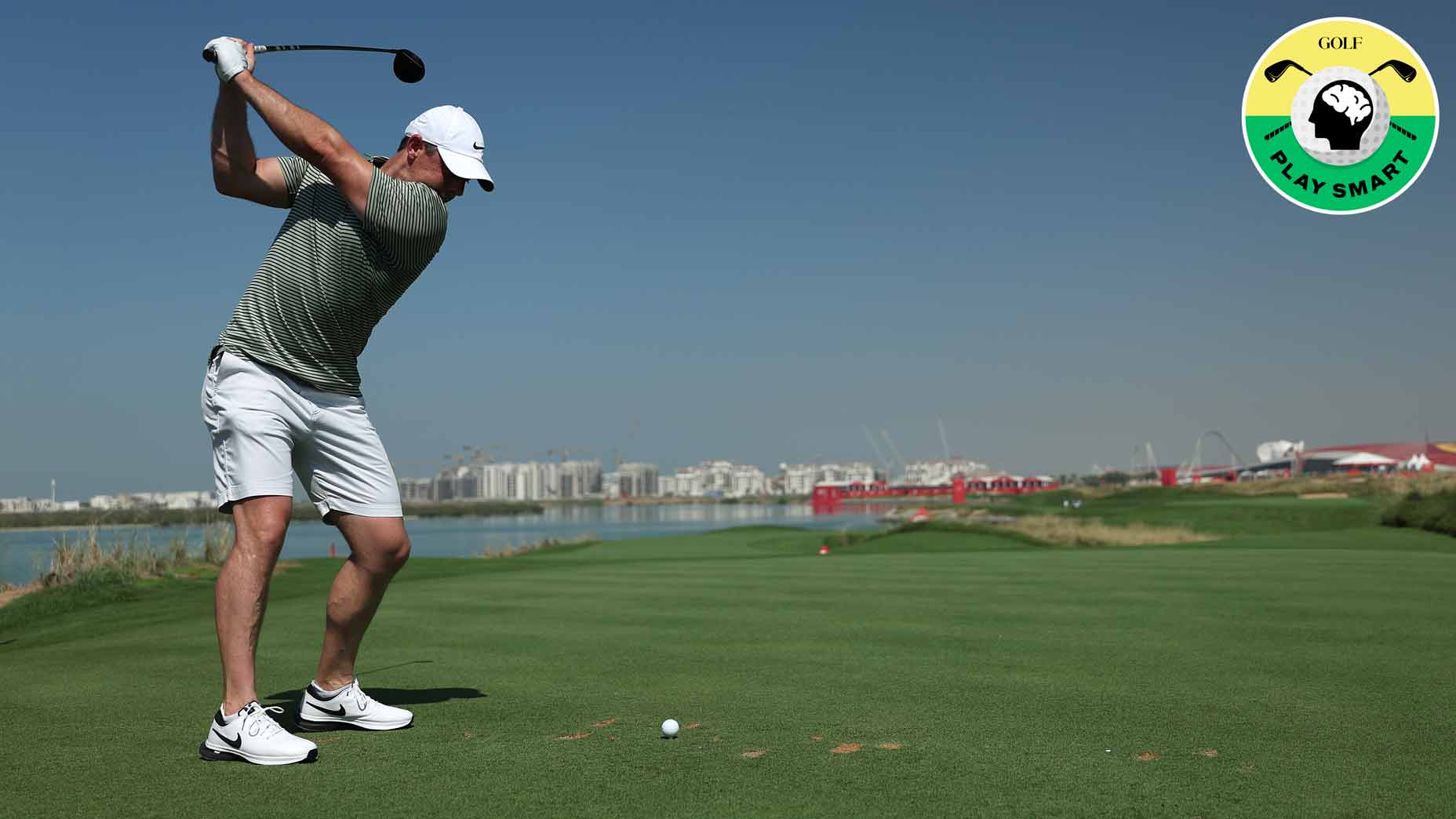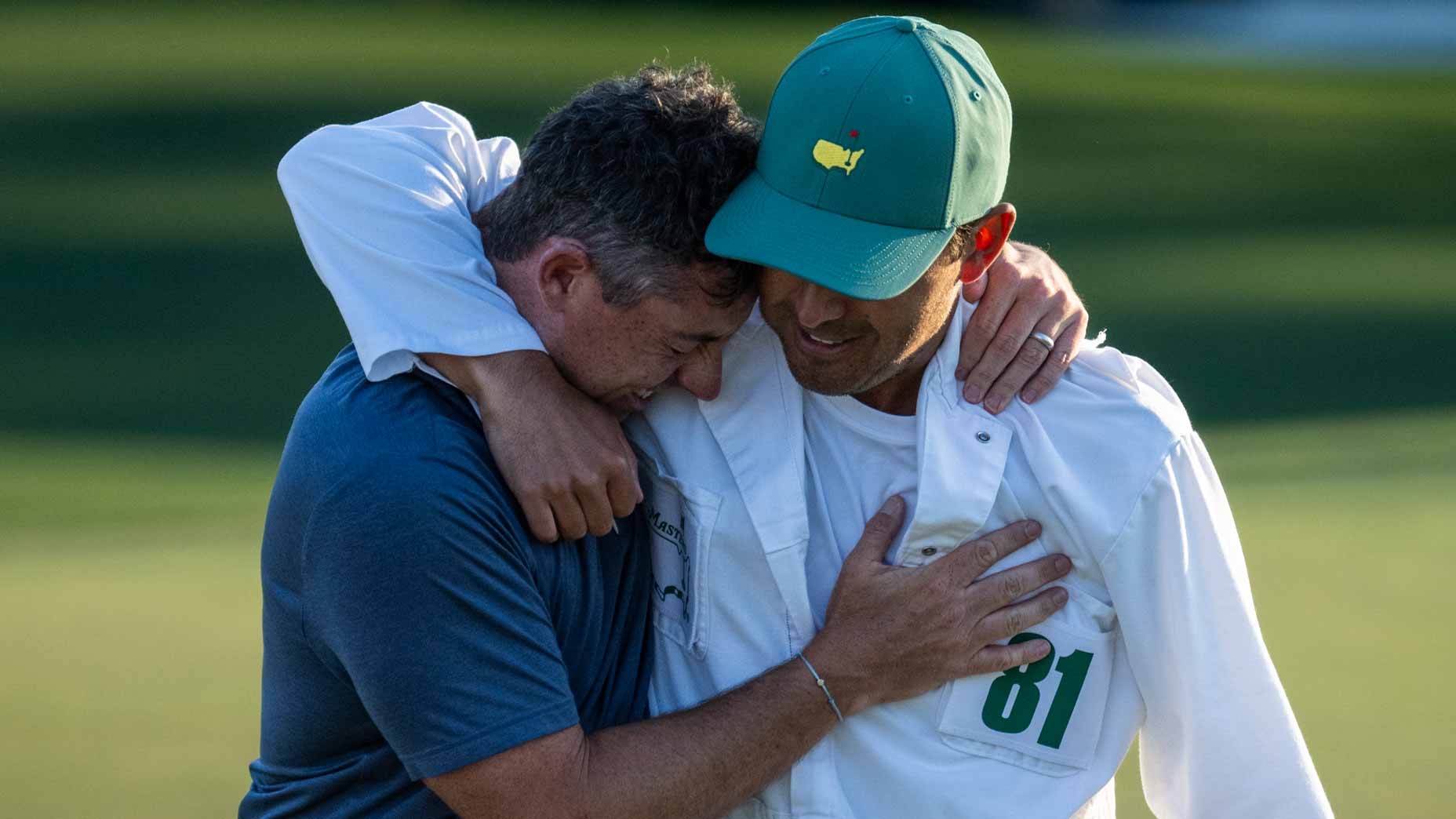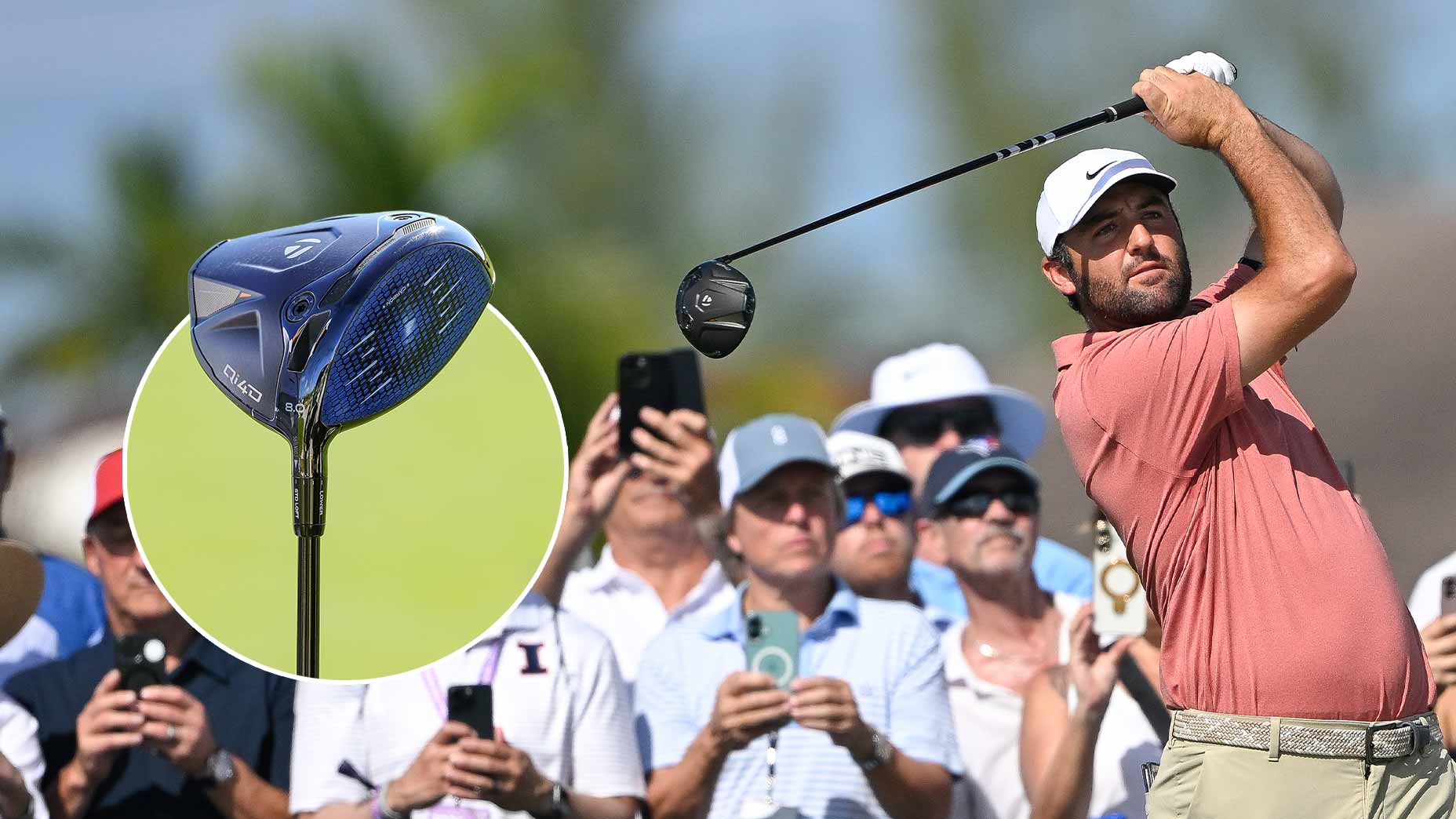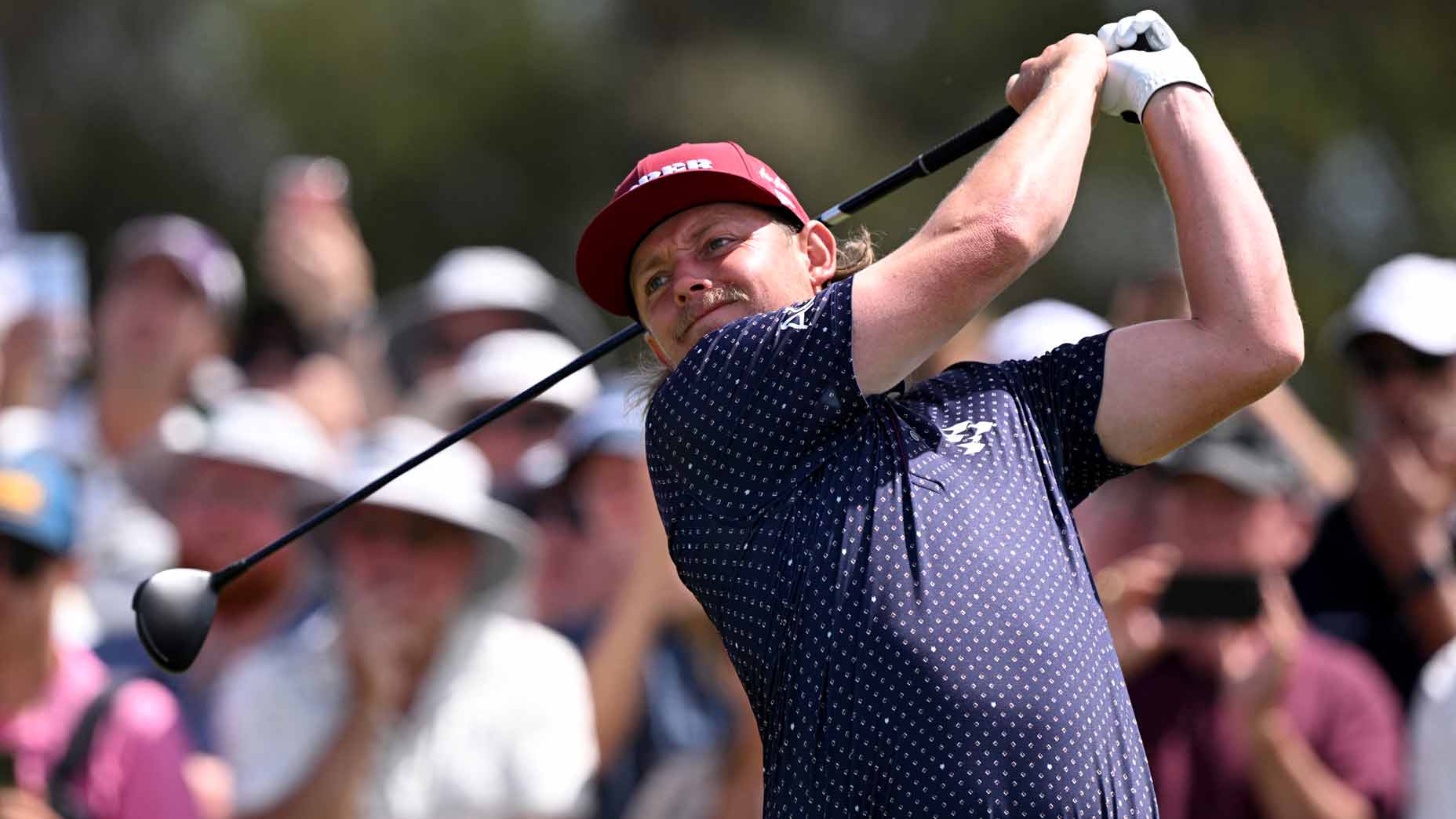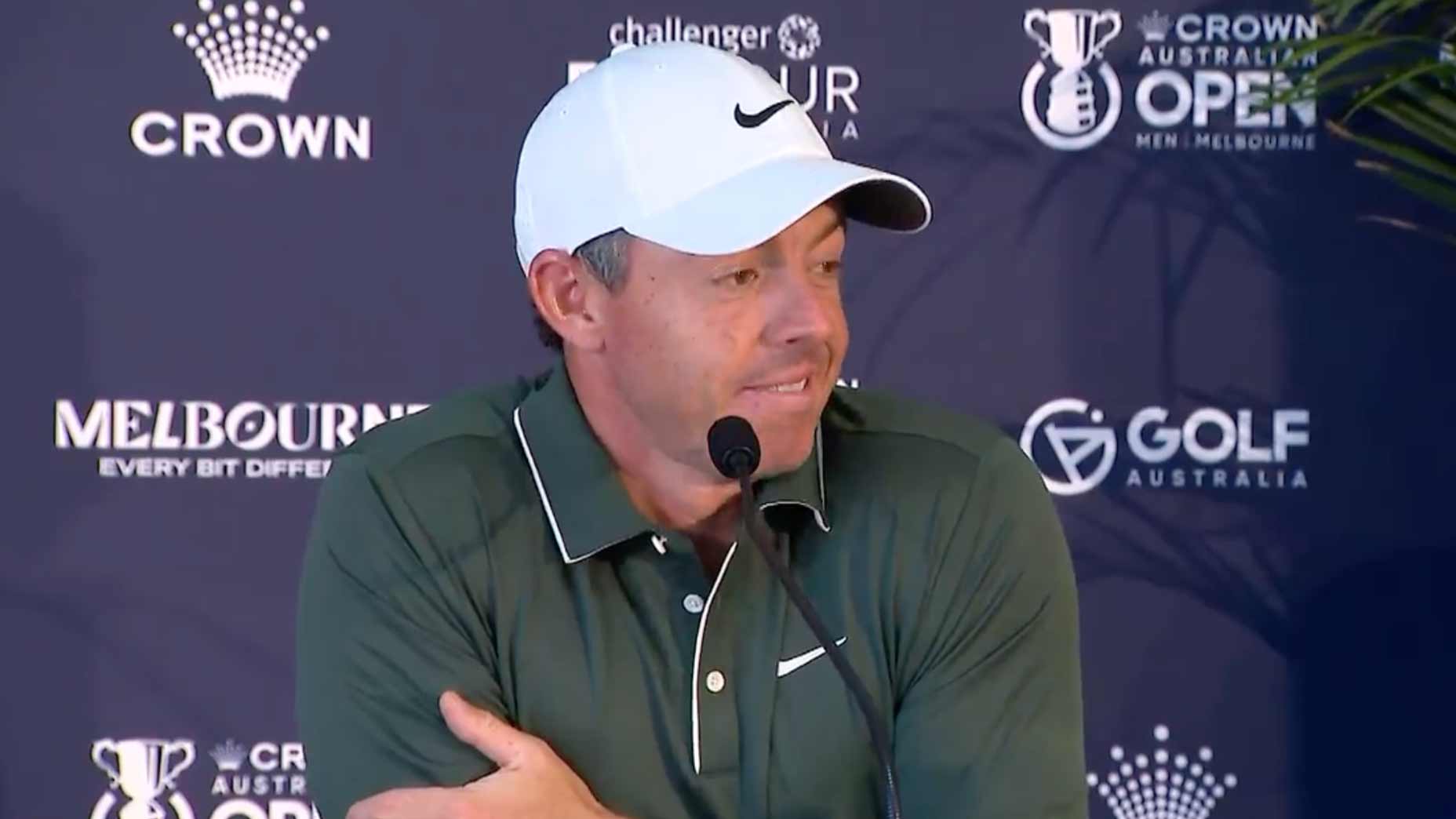Welcome to Play Smart, a regular GOLF.com game-improvement column that will help you become a smarter, better golfer.
Pros are meticulous in their practice routines. Go to any Tour event and you’ll see that there is no wasted rep when it comes to grooving the proper moves.
With so much technology available now (launch monitors, training aids, etc.) this has only enhanced the effectiveness of proper practice. When you can see data points for every shot, it takes the guesswork out of fixing the swing.
Sometimes, though, making swing changes requires radical means. Take Rory McIlroy’s recent practice methods, for example. At this week’s Abu Dhabi HSBC Championship, he explained that in the weeks leading up to the tournament, he hadn’t seen his ballflight on the range or simulator.
“The only way I was going to make a change or at least move in the right direction with my swing was to lock myself in a studio and not see the ballflight for a bit and just focus entirely on the movement,” he said.
McIlroy’s method is not what you’d typically expect from a top-ranked player. With so much tech available, not having any sort of feedback during practice can seem unorthodox. However, when making a swing change, it can be incredibly useful.
How Rory’s method can help you
Anyone who’s made a swing change knows the process can be discouraging. When you first start, even finding the ball with the clubface can feel like a challenge. When you struggle at first, your brain will start to fall back on old habits in order to hit the ball.
If this sounds familiar, don’t worry — even the pros struggle with it.
“I’m terrible at if I’m trying to make a certain swing or a certain swing change, and I start to mis-strike it or not hit the shots that I want, I’ll just revert back to what I was doing because it’s comfortable,” McIlroy said. “When there’s sequences to the shots that you hit, you’re always going to revert back to what’s comfortable.”
That struggle is why McIlroy decided to practice for weeks without seeing where the ball was going. In order to block his brain from reverting to bad (but comfortable) habits, he eliminated any sort of feedback. Only after the new swing was fully ingrained — and the old habits completely eradicated — did he go out to the course and hit shots.
If you’re trying to make a swing change yourself, this method can be extremely beneficial. By eliminating all feedback and just focusing on the proper swing positions, your brain will have an easier time accepting the change. And by the time you get back out on the course hitting shots, the new feels should feel natural enough that you won’t fall back into bad habits.
